Baekje accepted the advanced culture and technology of China, andwent on to adapt and assimilate the foreign cultural elements todevelop a unique culture of its own that was then disseminated toneighboring states. It maintained amicable relations with Japan,transmitting continental civilization and technology in exchangefor military assistance. Traces of close interaction between the twocountries still remain in many parts of Japan.
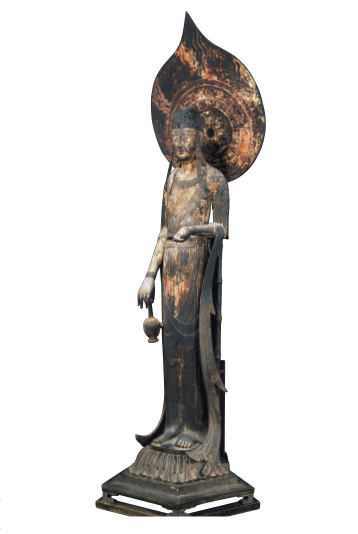
Kudara Kannon, or the Avalokitesvara Bodhisattva from Baekje, enshrined in the Treasure Houseof Horyu-ji, in Nara, is one of Japan’s most renowned cultural treasures. The graceful image,made of gilded camphor wood, stands 209cm tall. Baekje craftsmanship clearly shows in theunique mandorla, the openwork crown, the smooth curves of the shoulders and waist, and thetenderon the face. It is dated to the early to mid-seventh century.
On the fourth day of the tenth month of A.D. 663, the finalbattle that would determine the fate of the seven-centuryoldBaekje Kingdom was about to be waged in the lowerreaches of the Geum River. The kingdom’s capital, Sabi (presentdayBuyeo), had already fallen into enemy hands and King Uija surrenderedin 660, but last-ditch skirmishes were ongoing in variousparts of the country. Baekje restoration forces requested their allyJapan (called “Wa” at the time) to send reinforcements, to whichJapan responded by dispatching a contingent of over 40,000 soldiersin two phases.
The Baekje-Wa troops and the allied forces of Silla and TangChina engaged in fierce naval and ground battles over two days inwhat was tantamount to a major regional conflict in ancient EastAsia. Victory went to the Silla-Tang alliance. Although the most culturallyadvanced and diplomatically savvy among the three kingdomsof Korea, Baekje was unable to avert its tragic end. In someways, the Japanese reinforcements were a testimony to its stronginternational character.
Even after Baekje’s fall, close relations with Japan continued.According to the “New Selection and Record of Hereditary Titles andFamily Names” (Shinsen shojiroku), a genealogical record of aristocraticfamilies of Japan commissioned by the emperor and completedin 815, one third of the nobility were found to be immigrants,mostly of Baekje ancestry. Ancient Japan developed its cultureand laid its foundations as a nation largely through exchanges withBaekje. Even into the early ninth century, descendants of Baekjeimmigrants comprised a significant portion of Japan’s ruling class.
Three Mass Migrations
There were three major influxes of Baekje immigrants to Japan.The first came after the mid-fourth century when, amid frequentclashes with Goguryeo in the north, Baekje actively sought tieswith Japan to strengthen its defenses. Around this time, Baekjedispatched two scholars to Japan. The first was Ajikgi (Achiki inJapanese), who took with him two horses. He initially taught horsemanship,but when it became known that he was well versed inthe Confucian classics, he became tutor to the crown prince.
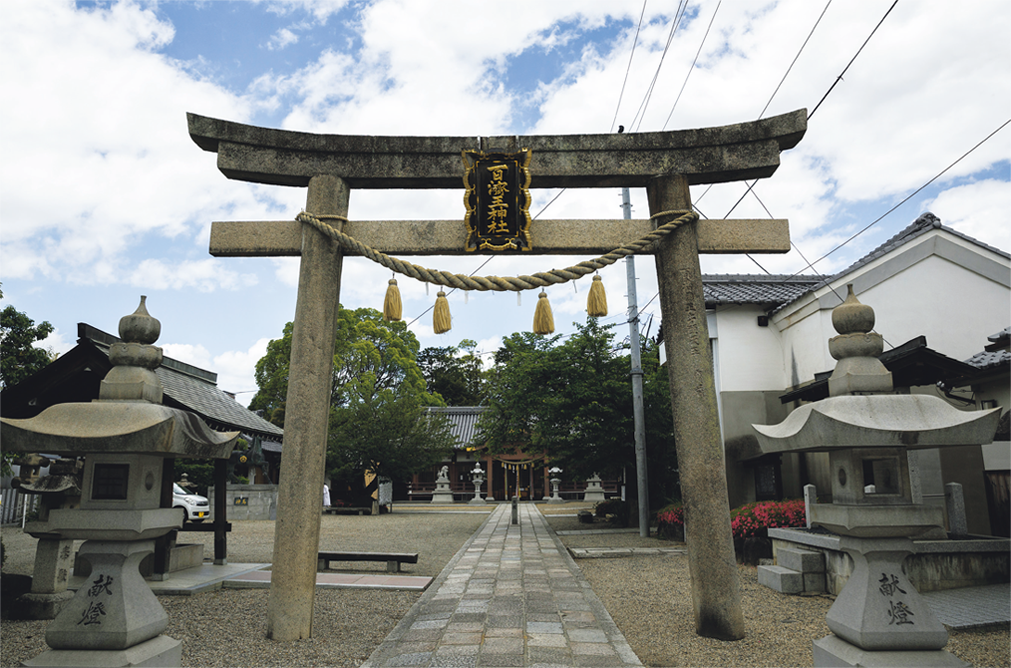
Kudarao-jinja, the clan shrine of the royal family of Baekje, still stands in Hirakata, Osaka Prefecture.In the eighth century, the descendants of the last king of Baekje who settled in southernOsaka also built Kudara-ji, a large temple where spirit tablets of Baekje kings were enshrined, butthe temple was destroyed in a fire. The current shrine was rebuilt in 2002.
Thesecond scholar was Dr. Wangin (Wani in Japanese), who was calledto Japan upon the recommendation of Ajikgi and is known to haveintroduced the “Thousand Character Classic” and the “Analectsof Confucius” to Japan. His descendants served in the royal courtfor many generations in positions responsible for ation, accounts, and finance.
After Wiryeseong, the first capital of Baekje later known as Hanseong,fell to Goguryeo in 475, Baekje moved its capital furthersouth to Ungjin (present-day Gongju), which prompted the secondmass migration to Japan. Under the threat of aggression fromGoguryeo, Baekje sought to strengthen its alliance with Japan; inreturn for Japan’s military assistance, it dispatched large numbersof professionals with advanced cultural knowledge and technologicalexpertise. Exchange with Japan flourished under the reign ofthe kings Muryeong (r. 501–523) and Seong (r. 523–554). During thisperiod, when Buddhism was introduced to Japan, Baekje sent Buddhistarchitects and artisans as well as technicians and specialistsequipped with new skills and knowledge. They played an activerole in building the foundations of a centralized government from aconfederation of powerful local clans, and the blossoming of Buddhistculture during the Asuka period (circa 538–710). The motherof Emperor Kanmu (r. 781–806), who relocated the capital to Heiankyo(present-day Kyoto) from Nara at the end of the eighth century,ushering in the Heian period (794–1185), was known to have been adescendant of King Muryeong of Baekje. This became widely knownwhen Emperor Akihito mentioned it in public in 2001.
After the fall of Baekje, members of the royal family and rulingclass crossed the sea to Japan en masse and settled there. Accordingto an account dated 663 from the “Chronicles of Japan” (Nihonshoki), as they boarded the boat for Japan they cried out, “Thename Baekje has perished today. Will we ever be able to visit ourancestors’ tombs again?” Based on historical records, their numberwas estimated to have exceeded 3,000, including some 60 highrankinggovernment officials. They took key government positionsduring Japan’s transition to a centralized power structure in the lateseventh century.
Baekje Buddhism and Asuka Culture
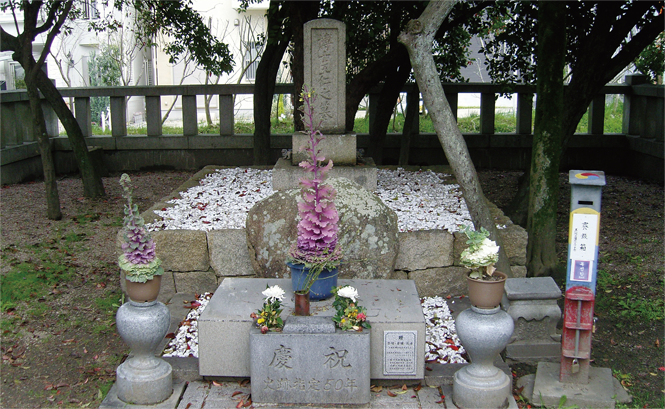
The alleged tomb of Dr. Wangin, or Wani as he is known in Japan, in Hirakata, Osaka Prefecture. An eminentscholar assumed to have arrived from Baekje in the mid-fourth century, Wangin is attributed with the introductionof the Chinese writing system to Japan. His descendants are said to have served in various areas ofcivil administration in Japan.
Buddhism was introduced to the Three Kingdoms of Korea muchearlier than to Japan through scriptures translated into Chinesecharacters. In all of the three ancient states, Buddhism served asan impetus for political unity, consolidation of royal authority, andcultural advancement. The same was true for Japan. History booksfrom China’s Sui Dynasty (581–618) state that writing was introducedto Japan through Buddhist scriptures from Baekje. In themid-sixth century, King Seong sent a Buddhist statue and sutras toJapan for the first time, and thereafter continued to supply the necessaryhuman resources until Buddhism took root there. Buddhistmonks as well as architects and artists were dispatched to participatein the construction of Asuka-dera, also known as Hoko-ji, oneof the oldest Buddhist temples in Japan.
It is said that when thetemple was completed, some 100 courtiers rejoiced wearing Baekjeattire. Early Buddhism in Japan built a strong foothold aroundAsuka through close interaction with Baekje.
Baekje used the Chinese written language and Buddhism in itsdiplomacy with Japan. It also acted as a cultural conduit betweenChina and Japan. One example is a U-shaped metal ornamentalhair pin. It is believed that this type of hair pin, which has beenfound in tombs in China from the third century onwards, wasbrought into Japan by way of Baekje. This is supported by the factthat such hair pins have been frequently discovered among burialgoods in Baekje-style tombs located in the Kansai region (or theKyoto, Osaka, and Kobe region). It is interesting that Baekje immigrantseven introduced to Japan the latest fashion items in vogue atthat time in East Asia.
Twin Buddhist Statues
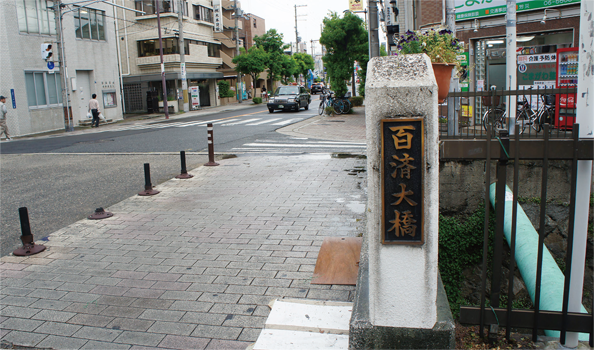
The Kudara Bridge in Higashisumiyoshi-ku, southern Osaka, speaks for historic relations between the regionand the ancient Korean kingdom of Baekje, which date back to the seventh century. The name Kudara,or Baekje, can be easily found in the names of stations, bridges, and schools around the area that continuesto have a large Korean-Japanese population today.
The Baekje Kingdom vanished when the restoration campaignswere crushed. But its cultural legacy was revived in Japan. Thetemple complex of Todai-ji in Nara, which bears traces of Baekjeinfluence, is a treasure trove of Buddhist culture which has beendesignated a UNESCO World Heritage site. The statue of the GreatBuddha, a national treasure housed in the temple, is known to havebeen built by the grandson of a Baekje immigrant who fled to Japanafter the kingdom’s fall. The descendants of Baekje’s royal familydeveloped a gold mine and donated gold for the statue. The essenceof the Buddhist culture that Baekje had fostered continued to live onin Japan.
Among the Baekje immigrant settlers, there were two powerfulclans. One was the Aya clan, who settled in Kinai (the capital region)near the Osaka and Nara prefectures. Most of them were craftsmen,such as blacksmiths, or involved in production of horse gear,silk fabrics, and earthenware.
The other prominent immigrant clanwas the Hata clan. They settled in the Kyoto prefecture and surroundingareas, and were engaged in such fields as sericulture, textiles,and water control. Descendants of the Hata divided into variousclans with different surnames. Tsutomu Hata, who became the80th prime minister of Japan in 1994, is a descendant of the clan.
Koryu-ji, constructed in 603 in northern Kyoto, originallybelonged to the Hata family. It houses six Buddhist statues designatedas national treasures. The most outstanding among them isthe wooden statue of the Pensive Bodhisattva, or Maitreya in Meditation.The image of the bodhisattva in deep contemplation of thesuffering of humans has captivated numerous people over the centuries.German philosopher Karl Jaspers praised it as “a full representationof the highestof human nature.” An almostidentical twin statue, the Gilt-bronze Pensive Bodhisattva (Korea’sNational Treasure No. 83), is housed inthe National Museum of Korea in Seoul.The two statues bear a striking resemblance,especially their smiles. Neitherof the sculptors has been identified, andcontroversy is ongoing as to whether theywere from Baekje or Silla. But whatever theplace of origin, what the enigmatic smile ofthe two bodhisattvas is conveying is a messageof salvation of all human beings —beyond Baekje, Silla, or Japan.
The Baekje Kingdom vanished when the restoration campaigns were crushed. But its cultural legacywas revived in Japan. The essence of the Buddhist culture that Baekje had fostered continued to live onin Japan.
The Legacy of the Ancient Kingdom
The vestiges of Baekje in Japan are scatteredthroughout the Kansai region. Thetour exploring the remains of the ancientKorean kingdom begins as we exit Kansai International Airport, the gateway to western Japan.
The first stop is Osaka, Japan’s second largest city. PrinceSeongwang, the son of Baekje’s last king, spent the rest of his life inJapan after the kingdom’s collapse. He was given the family nameof Kudara no Konikishi (meaning “king of Baekje”) by the emperor.Together with other descendants of the royal family, he settled inBaekje County in southern Osaka where immigrant clans were living.This area corresponds to today’s Ikuno-ku and still has a largeKorean-Japanese population. One can easily spot stations, bridges,and elementary schools with Baekje in their names.
It was during the great-grandson Keifuku’s generation that theKudara clan moved to Hirakata in the northern Osaka Prefecture.Keifuku, or Gyeongbok in Korean, donated gold for the constructionof the Great Buddha statue housed in Todai-ji in Nara. He also builtKudara-ji, a large temple for the clan, but it was destroyed in a fireand a park now stands in its place. Still standing is the clan shrineKudarao-jinja, which was built around the same time near the templeand has since been reconstructed.
The next place on the itinerary is Nara. Asuka, a village locatedfurther south, is home to the temple Asuka-dera, but it is hard tofind traces of the Baekje people there as their temples were alsomoved to Nara after the relocation of the capital. Our first stop is thetemple Gango-ji. It was once one of the powerful seven great templesof Nara together with Todai-ji and Kofuku-ji, but declined afterthe Middle Ages. However, the roof tiles of the main hall, a nationaltreasure, are worth a close look as tiles from the Asuka periodmade by Baekje artisans still remain.
After Gango-ji comes Todai-ji, which is not far off, and thenHoryu-ji. The large temple grounds of Horyu-ji are filled withnumerous national treasures, but the one that exudes the auraof Baekje is the Kudara Kannon (Avalokitesvara Bodhisattva fromBaekje). Standing over two meters tall, the wooden statue is asculptural masterpiece exemplifying the beauty of the human body,which has long been a source of artistic inspiration. In 1997, thestatue was displayed at the Louvre Museum as part of an exchangeof representative national treasures between France and Japan.
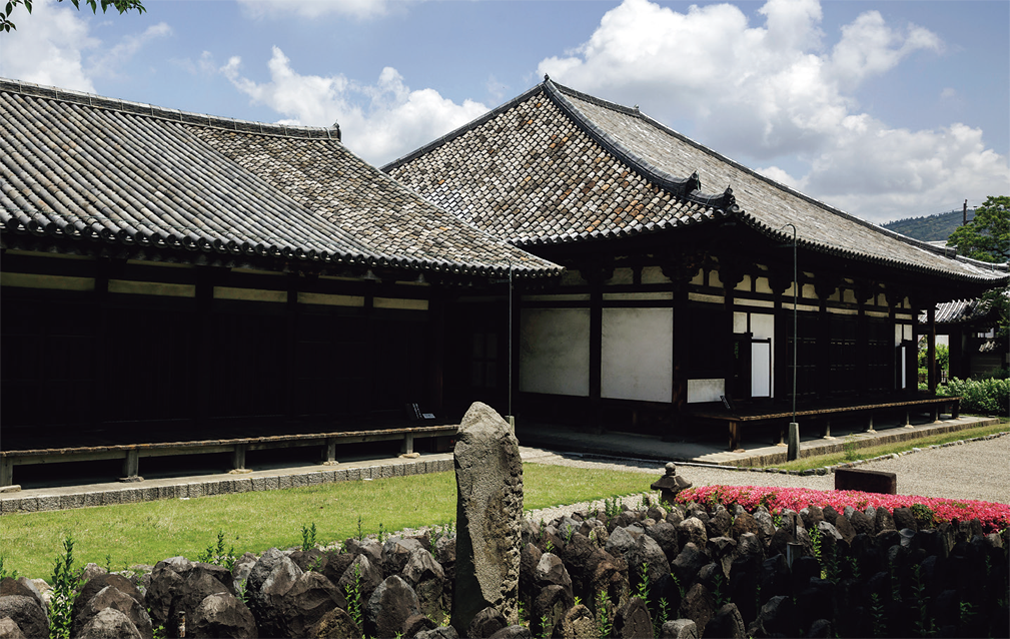
The main hall (right) andthe zen room of Gango-ji, inNara. Many of the roof tilesof these buildings, distinguishedby brownish tones,were made by Baekjeartisans during the Asukaperiod. The temple wasoriginally founded in Asukain 593 and was known asAsuka-dera or Hoko-ji,one of the oldest Buddhisttemples in Japan. It wasmoved to Nara in 718, whenthe capital was relocatedthere, and renamed Gangoji.

The five-story pagoda atHoryu-ji, in Nara, is one ofthe oldest wooden buildingsin the world. It wasbuilt when the temple wasreconstructed in the earlyeighth century after thefirst Horyu-ji, completed in607, was burned down in670. The pagoda reflectsthe seventh-century Baekjestyle. It is 32.5 meters tall.
Next, we board the train for Kyoto and head north. They say youcan’t visit Kyoto without seeing Kiyomizu-dera, another temple connectedwith Baekje. Sakanoue no Tamuramaro, a general and shogunwho conquered the Tohoku region during the reign of EmperorKanmu, is the one who initiated the construction of the temple. Themain hall, a national treasure, was originally his house that wasrebuilt. The Sakanoue clan is known to have diverged from the Ayaclan. During the era when the emperor’s maternal relatives weredescendants of the Baekje royal family, members of the clan heldkey positions in the military and played an important role in openingthe Heian period, pioneering a new future for Japan.
Last is a walk around Kyoto city in a counterclockwise direction,headed for the temple Koryu-ji. Here, many ancient Buddhist statutes,including the wooden statue of the Pensive Bodhisattva, awaitus. We admire the acme of Buddhist culture and take a moment toruminate on the anguish of the displaced Baekje immigrants whohad lost their country.
Clues for Future Relations
With the end of the alliance betweenBaekje and Japan, all ties connecting theancient Korean peninsula and the Japanesearchipelago were severed, casting adark shadow over Korea-Japan relationsever since. At the end of the 16th century,Japan invaded Joseon, causing mass casualtiesand extensive material damage; in1910, Japan annexed the Korean Empire.The deep wounds inflicted during the 35years of occupation have never completelyhealed. How might relations betweenKorea and Japan pan out in the future? Theanswer may be more easily found if the twonations recall the open and friendly relationsand cosmopolitan outlook of theirancestors of 1,500 years ago.
Ha Jong-moonProfessor, Department of Japanese Studies, Hanshin University
Ahn Hong-beomPhotographer